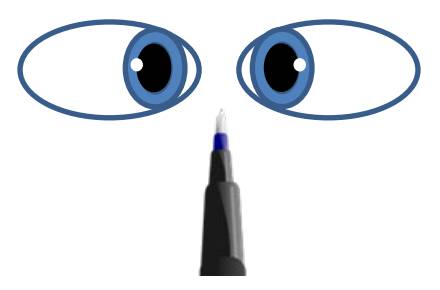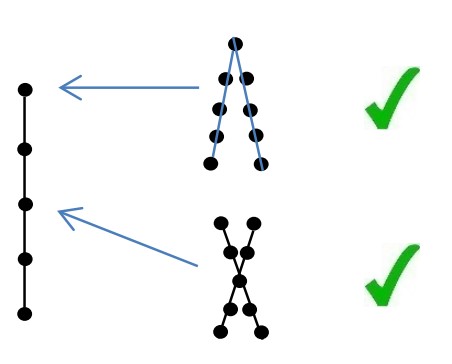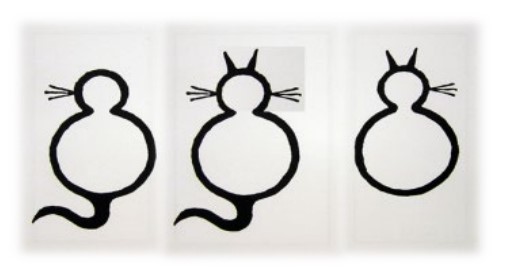Convergence Insufficiency Exercises
Please note, this page is printable by selecting the normal print options on your computer.
Convergence Insufficiency
Is a condition where there is difficulty coordinating the eyes to focus on near objects closer than 10cm from the nose. Symptoms often associated with poor convergence.
These may include some or all of the following:
• frontal headaches or eyestrain associated with close work
• blurred vision on close work
• intermittent double vision
Orthoptic Exercises
There are a range of Orthoptic exercises which all aim to improve the way in which the eyes work as a pair. When the course of treatment is successfully completed, it is expected that the results will be long lasting and that patients will be symptom free. However, some patients may have to repeat exercises later in life. The exercises are highly effective if done as instructed. However, they rely upon:
• correct exercise technique
• regular and frequent exercises (3 or 4 times daily) and the need to relax the eyes afterwards
• correct glasses worn (if used)

Smooth Convergence
• Glue a small, detailed target onto the wooden spatula
• Hold spatula just below eye level and at arm’s length
• Slowly bring the target towards your nose, aiming to keep the image clear and single
• When the image splits into two, move the spatula backwards slightly to re-join the images
• Then try to move the target slowly towards your nose again, while attempting to keep the image single
• When you reach your closest point, hold the image single for a slow count of 10
Jump Convergence
• Hold spatula just below eye level and at arm’s length, and pick a distance target approximately 6m away
• Start by looking at the distant (6m) target, then look at the near target on the spatula (which should be kept single)
• If the near target is single, look back to the distant target, and whilst doing this, bring the near target a little closer to your face and focus on this again.
Repeat for different near positions until you can no longer keep the near target single.
Dot Card
• Hold the dot card on the tip of your nose and point it slightly downwards. (One hand at the top, one at the base of the card)
• Focus on the furthest spot for a slow count of 5
• Slowly move your focus to the next spot and, once again, maintain for a slow count of 5
• Try each spot in turn, moving towards the nose. Remember to hold focus for a slow count of 5
• When you reach a spot that you cannot keep single, focus hard on it to try to bring it back to single vision, and if it remains double, return to the previous spot before trying the nearer one again
• Note that each spot that you are concentrating on should appear single but that everything else, in front and behind, will look double. This is normal!

Stereograms
There are a range of stereograms, including cats, buckets and circles. They all work in the same way by exercising convergence and focusing separately. They take some practice to learn and
perform correctly!
• Hold the stereogram at arm’s length
• Hold a pen in front of the card
• Concentrate on the tip of the pen
• Slowly move the pen towards you
• Watch the pen tip all the time but be aware of the 2 stereogram pictures in the background
• As the pen moves, the stereograms in the background should each appear to split apart
• When the pen is positioned approximately half way towards your nose, the 2 central images should appear to overlap, forming a complete third image in the middle of the original two
• Hold the complete third image in place for a slow count of 10
At first, the stereogram pictures will appear very blurred, but they will become clearer with practice.

Things to remember:
• Wear correct glasses (if used)
• Exercise regularly 3-4 times daily
• Little and often is important to success. Aim to perform the exercises for no longer than 2-3 minutes on each occasion
• Relax eyes after exercising. This can be done by closing your eyes for a few minutes or by looking out of the window into the far distance
Your exercise plan:
Other exercises are available and will be prescribed to patients when required.
References can be supplied for the information in this leaflet if required from the Orthoptic Department. Tel: 01908 995532.
